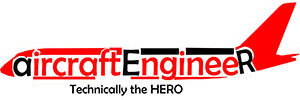The definition of base maintenance is simple – it is all maintenance which does not fall under the line maintenance category. In practice, this will be mainly heavy checks such as C and D checks. During those checks major and minor aircraft systems are being evaluated together with complex and time consuming tasks such as corrosion prevention, structural work, replacement of major components, interior refurbishment, etc. Of course, all this work needs to be done in a hangar and requires quite a bit of planning and a significant dose of cooperation between the airline and the MRO.
The arrangement of base maintenance is not as simple as with line maintenance. Operators are required (by law) to have base maintenance contracts in place for all aircraft they operate. Such contracts need to fulfill the Part 145 contracting / subcontracting requirements and need to be approved by the respective aviation authority.
The way this is generally done is that major MRO’s have so-called GTA’s – General Terms Agreements – which can be signed by an operator. A GTA does not warrant anything really. It does not ensure that there will be an available slot for your aircraft when you need one, neither does it guarantee any kind of technical support. However, it does present a general framework of the cooperation between the airline and the MRO once a heavy aircraft check is being ordered. It can also be approved by the authority, which means that it satisfies the Part 145 requirements mentioned above.
Once you agree on a check date and price with the MRO of your choice, all you need to do is sign an attachment (or appendix or side letter – whatever you wish to call it) to the GTA. All the attachment does is specify the work scope, induction and extraction dates and pricing. All other terms and conditions have already been agreed upon in the GTA, so there is no sense in repeating those. Last but not least – the attachment does not need to be approved by the authority, as it is not an agreement by itself. This allows for more flexibility as the operator is not limited by the time it usually takes to approve documents at the CAA.
